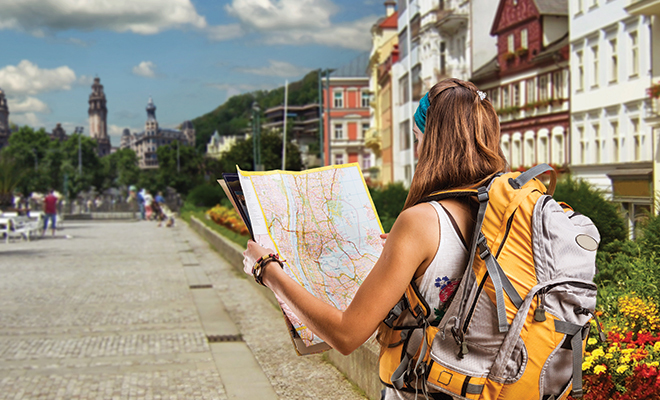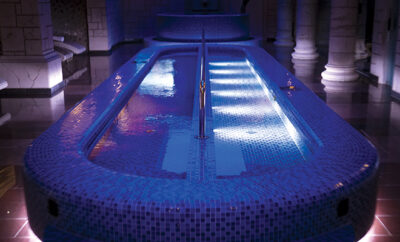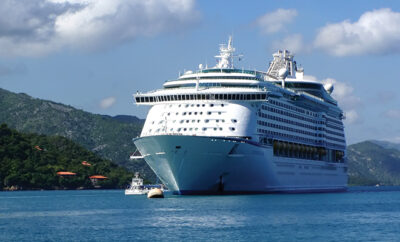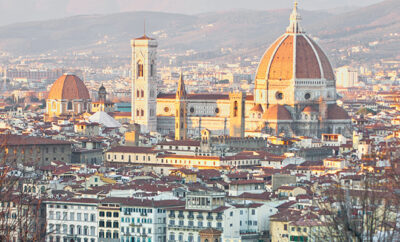
Walk this way…
Unspoiled vistas, regional history, locally sourced food, unique itineraries and fitness training included…what sort of vacation are we discussing?
European hiking tours have become a preferred mode of travel for Mary Jane Roberts and Nan Burgess, long-time friends and travel partners, of Chicago, Illinois. “In the last ten years, we have hiked the Pays Basque, the Amalfi coast, Patagonia, Turkey, the Rhine River Valley and other fascinating routes.”
The attraction of small-group, all-inclusive, well-planned yet flexible excursions that are scheduled and detailed by knowledgeable, experienced guides have Mary Jane and Nan returning to Europe year after year. “Our first trip to the Pays Basque hooked us. We followed part of the pilgrims’ path to Santiago de Compostela, crossing the mountainous border in the Pyrenees between France and Spain. Backroads, the tour company, took care of all our needs and adjusted to the hiking abilities within the group. If you didn’t want to hike the afternoon route after the daily gourmet lunch–with wine!–their vehicle took you back to the hotel.”
“All-inclusive” generally indicates that guides, accommodations in a variety of hotels, all meals including wine, gourmet picnic lunches, a support vehicle, luggage transport and comprehensive pre-trip information are covered. Cost ranges between $2,900 and $3,500 per person after currency conversion, but doesn’t include air fare to the tour’s starting point. Self-guided tours are a bit less expensive yet offer excellent organization with accommodations and directions. “If you’re comfortable with directions, a compass and the outstanding European trail-marking system, you’ll be fine. But if you have orienteering skills, that’s helpful,” Nan noted. “Our tour company in Germany arranged our hotels, usually in small towns, with the inn above a restaurant, so you’re set for dinner. You’ll need to scout out a lunch location along the route, but these days the Internet makes that easy.”
Trip leaders speak the local languages and can transport hikers into deeper levels of a region, sharing insights into its culture, cuisine, history, wildlife and ecology. “Our trip to Italy’s Piedmont region with Hedonistic Hiking focused on the Slow Food movement. Lunch was always local and seasonal, with cheeses, meats, fruits, vegetables from that day’s farmers’ market,” Mary Jane reminisced. “And the wine! It was all local and small production runs, so unfortunately we couldn’t take any home! Jackie and Mick Parsons, the company’s owners, spend six months of the year in Italy and the other six in Australia. Every day during lunch, Jackie read a chapter of a book to us that gave us information about local history.”
With a small group, travelers visit small towns, see local venues and meet local personalities. “In Piedmont, we went truffle hunting; that evening, when we had dinner, the gentleman who had taken us out with his dogs brought some of our gourmet collections to the restaurant and we enjoyed them on our entrées, so we felt very connected to the food we ate,” Mary Jane said. “As we walked through the woods near Albareto in the Parma Apennines during the Porcini Mushroom Festival, we saw the mushroom collectors coming out of the woods with baskets full of their funghi bounty.”
For the adventurous soul, trekking the back roads provides serendipitous surprises and education. “We were enjoying a sumptuous lunch in a meadow in the Basque region when suddenly native ponies began poking their heads over our shoulders to check out our plates!” Mary Jane laughed. “These are Pottoks, or Pottoka in the Basque language; they’re an endangered, semi-feral breed of pony indigenous to the Basque region of the Pyrenees. This group had become a bit acclimated to seeing groups come through their territory and they were looking to see what tidbits we would share!”
Accommodations can vary from simple inns to luxury hotels. The tour companies are typically clear about what the lodgings are, yet the uniqueness of each one is striking. “On one trip, we stayed in what used to be a monastery,” Nan remembers. “On Lake Como, we were booked into the Grand Majestic Hotel, the old grand dame of the Italian Lake District. They’re all safe and clean, but each one is a surprise.” Plus, the trip companies offer guides to becoming fit for the trip and common-sense tips such as breaking in your hiking boots ahead of time, how to dress in layers and what to include for your daily backpack.
“On every trip, I have felt a real connection to history, whether it was the local history or what I learned about World Wars I and II and American history in the regions,” Mary Jane affirmed. Nan agreed. “It’s about being outside with your feet on the ground, going where you wouldn’t normally go. And sometimes going two miles the wrong way and having to backtrack if you read the directions wrong! But it’s always, always a great trip.”
“It’s something new every tour,” Mary Jane concluded. “The hardest work is deciding where to go next!” HLM
Sources: backroads.com, dolomitetreks.com, hedonistichiking.com.au, macsadventure.com and mtsobek.com.







